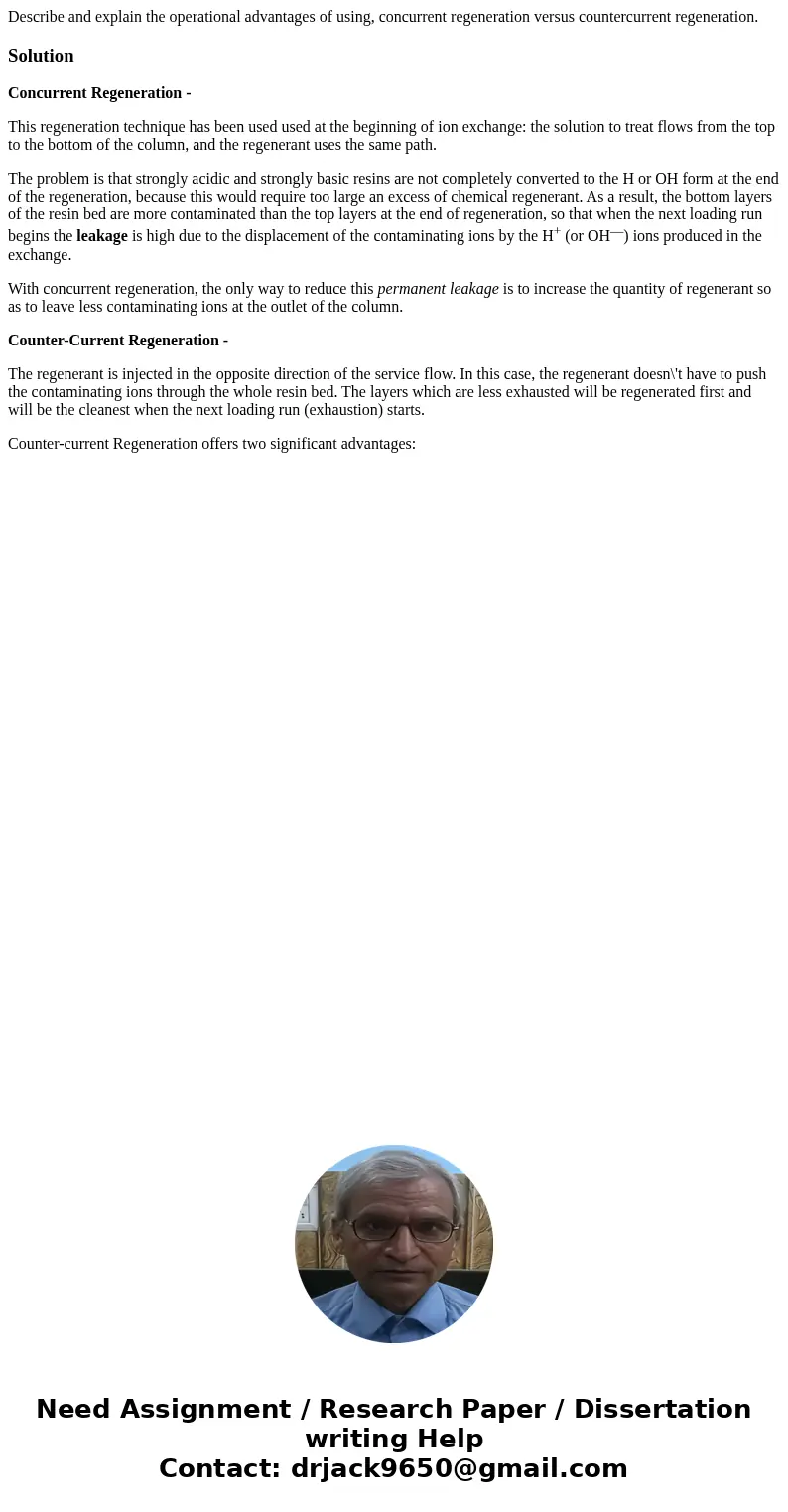Describe and explain the operational advantages of using con
Describe and explain the operational advantages of using, concurrent regeneration versus countercurrent regeneration.
Solution
Concurrent Regeneration -
This regeneration technique has been used used at the beginning of ion exchange: the solution to treat flows from the top to the bottom of the column, and the regenerant uses the same path.
The problem is that strongly acidic and strongly basic resins are not completely converted to the H or OH form at the end of the regeneration, because this would require too large an excess of chemical regenerant. As a result, the bottom layers of the resin bed are more contaminated than the top layers at the end of regeneration, so that when the next loading run begins the leakage is high due to the displacement of the contaminating ions by the H+ (or OH—) ions produced in the exchange.
With concurrent regeneration, the only way to reduce this permanent leakage is to increase the quantity of regenerant so as to leave less contaminating ions at the outlet of the column.
Counter-Current Regeneration -
The regenerant is injected in the opposite direction of the service flow. In this case, the regenerant doesn\'t have to push the contaminating ions through the whole resin bed. The layers which are less exhausted will be regenerated first and will be the cleanest when the next loading run (exhaustion) starts.
Counter-current Regeneration offers two significant advantages:

 Homework Sourse
Homework Sourse